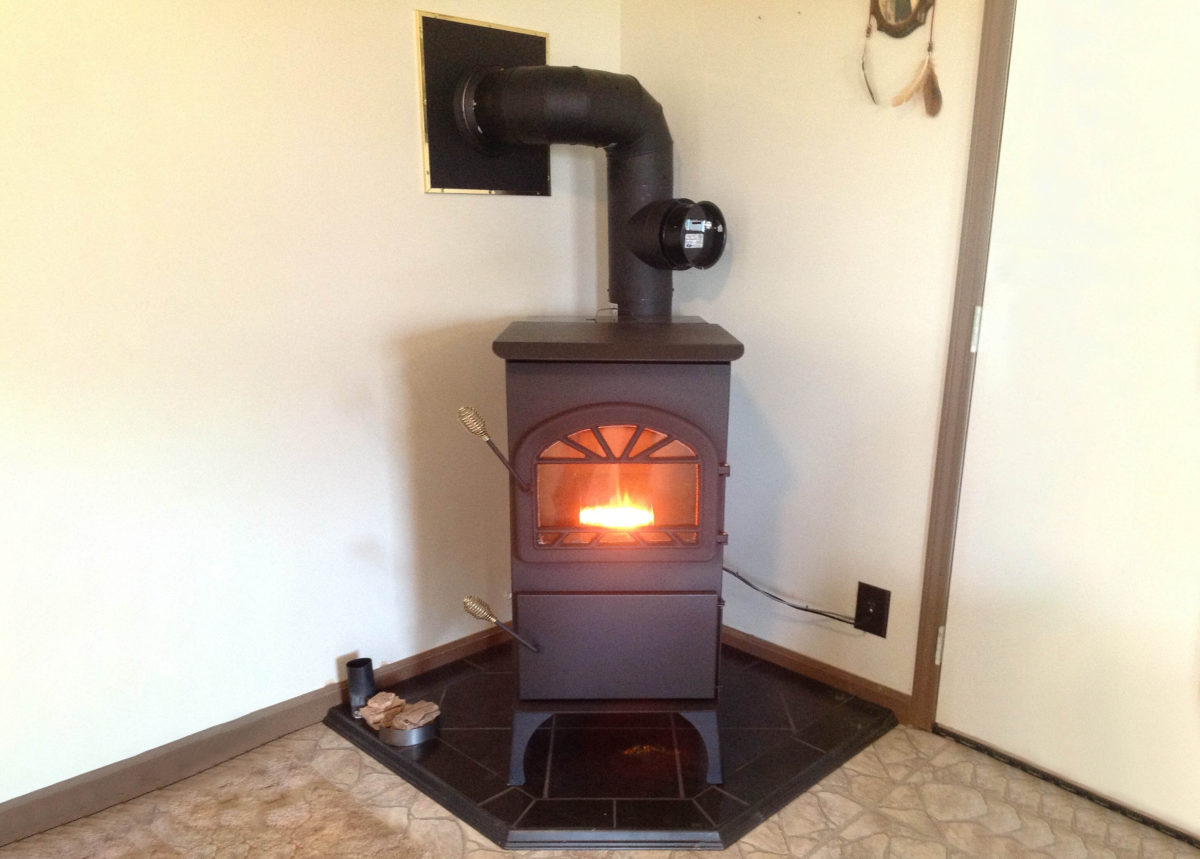As we look forward to spring and the end of winter, many of you are looking for ways to keep their homes warm and cozy without breaking the bank. This past winter had many challenges with dramatic increases in energy costs and severe cold. There are many ways to reduce your heating cost while staying warm. If you’re looking to research the best solution for inexpensive heat, check out these ten ideas.
Many of the ideas are little or no cost and are easy to accomplish, so roll up your sleeves and get to work! There’s sure to be a solution that fits your needs and budget, from space heaters to fireplace inserts. So get ready to stay warm for less money all next winter long!
1. Utilize Passive Solar Heating
Southern-facing windows are an excellent source of heat on sunny days in the winter. Open the drapes or window coverings as soon as the sun is available each morning. Keep window coverings closed in all other areas of the house to reduce heat loss. Close southern-facing window coverings as soon as the sun is no longer shining in each day. Orient furniture in any room with southern facing windows so as not to block available sunlight from warming as much of the room as possible.
2. Purchase Infrared Electric Space Heaters
Infrared heat is very cozy and efficient because it warms you directly and is 100% efficient. Before purchase make sure you research you options carefully and choose the most cost-effective and reliable heater available. This type of heat is best suited to heat you while stationary, for example preparing a meal in the kitchen, watching TV, or reading in the living room. Infrared heat only works effectively with a clear line of sight, so make sure the heater is near enough and has an unobstructed path to your location.
3. Install a Programmable Thermostat on Your Central Heating System
There are many inexpensive programmable thermostats available in today’s world of enhanced technology. Some solutions even offer the option to remotely access the unit using an App on your smartphone. Before purchase verify the wiring of your existing thermostat to ensure compatibility. Most models offer multiple program times and temperatures. Generally speaking, the house can be kept cool while you are not there and while sleeping. For every reduction of one degree Fahrenheit, it is possible to reduce heating costs by over 1%.
4. Wear Warm Clothes Around The House
This is a simple, no-cost, and often overlooked idea for reducing heating costs. While it may seem a bit extreme to walk around in a jacket while inside, consider dressing a bit warmer so you can lower the temperature setting. As previously addressed lowering the heat setting in your home can result in considerable savings
5. Close The Flue on Your Fireplace
An often-overlooked air leak in the home is the standard wood fireplace. When in operation unless specially designed, most fireplaces will remove more heat than they add. While the ambiance of a wood fire is extremely cozy it can cost you extra on your heating bills. Close the flue and keep it closed at all times (of course this means, don’t use the fireplace!).
Another related and worthwhile idea is to add a wood or anthracite burning stove to the front of the fireplace and utilize the chimney to vent it. Depending on how wide the hearth is a stove can sit in front of the opening on the hearth. Leisure Line makes two models of stove that can be installed in this way, the Hearth model and the Lil Heater Sidewinder. These stoves can heat up to 2,500 square feet and will provide you with a toasty warm home for less money while
providing easy operation. The Coal-Trol System will keep the temperature in the home wherever you set it.
6. Install Solar Energy Panels
Utilizing the power of the sun to generate electricity has many benefits. Solar is the most abundant renewable energy source and the technology for generation and storage continues to improve. Storage capability of solar systems was previously the biggest drawback due to inclement weather reducing solar output by up to 90%. With the latest improvements in battery technology this issue has all but disappeared. There are also federal and local rebates and tax credits available to offset the high installation cost. The addition of a solar system will also add to the value of your home. Given the complexity of solar systems and the continuing development of new and better technology, careful research is required before selecting a system.
Remeber, installing solar might not save you money instantly so carefully consider the “payback time” required to break even, after that you will be able to save money on electricity & heating bills for many years to come. Those factors make solar energy one of the best solution for inexpensive heat.
7. Get Your Boiler or Furnace Inspected And Evaluated
Many people overlook the inspection and maintenance of the central heating unit. Often the out of the way location of these units causes people to lose sight of the fact that they may be costing more money to operate than required. Have a professional inspect the age/efficiency to advise on how best suited modern needs versus old school technology!
When making comparisons there are many factors to consider including efficiency, cost per BTU, and other related costs (maintenance, distribution charges, service charges, etc.). Simply put, natural gas fired units are the least expensive to operate of all central heating units. When efficiency is considered, both gas and oil boilers are less efficient than electric ones. Of course the cost of electricity continues to increase so the overall cost may not be less than fossil fuel fired units. If your system is found to be inefficient or needing repair, there are many high efficiency central units available today. Electric boilers are becoming more popular and are worth checking out. The heating professional who evaluates your unit can give some excellent advice on the replacement options and costs. As is with any major expenditure it is wise to research it fully and get an idea of the total cost of ownership including any available energy rebates.
This discussion would not be complete without addressing solid fuel central heating units. To keep things simple, we will not address wood or wood pellet units because they are addressed in depth in the blog titled “Why Should You Choose Coal Over Wood…”. Anthracite coal boilers and furnaces are worth considering when looking at efficient replacements for an existing
central heating unit. It is currently a lower cost per BTU than oil (1 gallon of oil equals roughly 12.5 pounds of coal) and a small amount cheaper than natural gas (1.35CCF equals one gallon of oil). These numbers in today’s prices equate to oil at $540 a ton in anthracite, and natural gas at $233 a ton in anthracite. Actual prices for coal picked up at the processor are $170 to $213 per ton, so it is clear that anthracite is a cheaper alternative. In addition to the cost-benefit, an anthracite stoker boiler or furnace produces even and consistent heat because the fire stays lit all the time, thus eliminating the swings in temperature found with many gas and oil-fired units.
8. Add Insulation And Seal Any Air Leaks
Heat rises, therefore the attic of your home can be the biggest area of heat loss. Additionally, sealing any air leaks in walls, ceilings, doors, and windows can dramatically decrease heating costs. The work required is within the capability of most homeowners and can be accomplished during the coming spring and summer so that your home will be cozier in the winter.
By investing in materials and a little hard work, you will rest assured that over time this investment will be amply compensated by reduced energy bills as well as lower heating/cooling costs down the line.
9. Use Credit Cards To Pay Your Utility Bills
You can often use a credit card to pay your utility bills. Check with your utility company to verify that there are no extra fees or hidden costs. Also worth looking into is checking to see which cards you hold give more of a cashback offer on certain items, utilities are often in this category. In any event, using this strategy can reduce the bottom-line cost of energy to heat your home. Another strategy is the use of budgeted energy cost that creates a set monthly utility bill that is based on total annual energy cost. This will not reduce overall energy cost but can help with balancing your monthly budget.
Conclusion:
We hope that reading this blog has encouraged you to further explore the best solutions for inexpensive heat. By staying curious and continuing your research you will most certainly find
the solution(s) best suited to your needs. As with everything in life, an effort is required to achieve maximum results!
Leisure Line Stove Company has a variety of anthracite coal stoker stoves, hot air furnaces, and boilers. We care about you and your energy needs and prioritize your complete satisfaction above selling products.
Get in touch with us today at 570-752-1811 for a helpful discussion regarding your heating needs!



